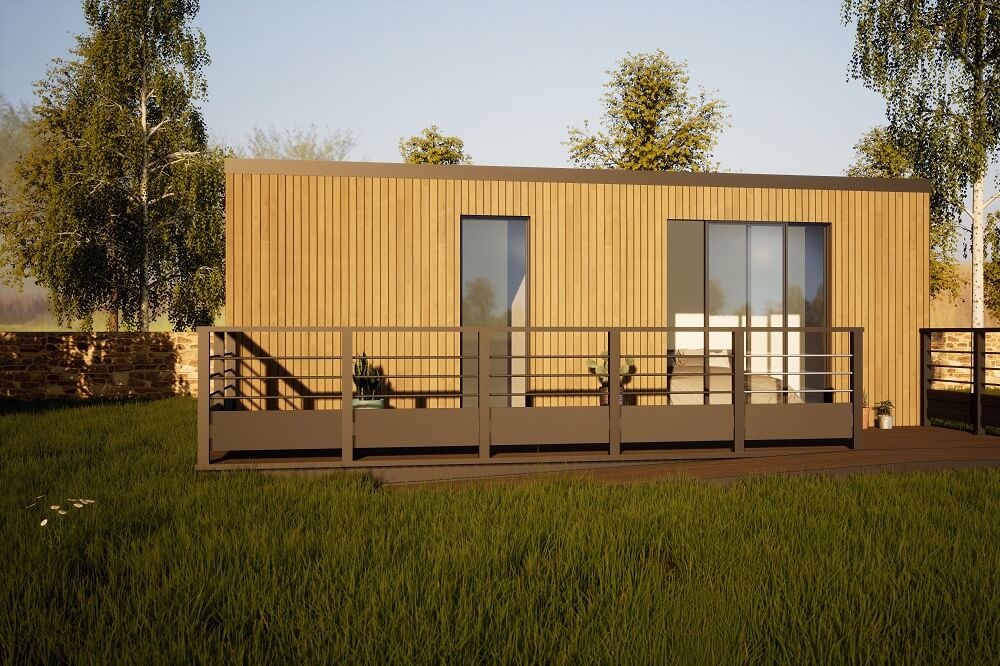
Container shelters are a versatile solution that are used in a variety of industries such as logistics, construction, agriculture and manufacturing. Their popularity is due to their ease of assembly, mobility and lack of need for complex building permits, making them an attractive alternative to traditional permanent structures. However, in order to take full advantage of the potential that container shelters offer, it is essential to have a thorough understanding of your business needs and the roofing options available. So how do you choose the right container shelters?
The function of the future structure
Determining the function to be performed by the container shelters is a key stage that influences its design and specification. If it is to be a temporary storage facility, it is important to consider its capacity, the possibility of easy access to the stored goods and the provision of suitable storage conditions, such as protection from moisture and extreme temperatures.
If the canopy is to be used as a shelter for a loading area, it is necessary to provide space to manoeuvre equipment such as forklifts and to organise the efficient flow of goods. In such cases, it is important that the canopy is high and wide enough to allow unobstructed logistics operations. The ability to quickly dismantle and move the canopy to another location can be an added advantage.
If the canopy is to protect equipment, consideration should be given to its durability and resistance to external factors such as rain, snow, wind or UV radiation. Corrosion-resistant materials may be required, as well as providing additional theft protection.
Choosing durable and robust materials
When choosing the right materials for container shelters, it is crucial to take into account local climatic conditions and specific environmental requirements. For example, in regions with high humidity or exposed to rainfall, materials with increased corrosion resistance, such as galvanised steel or specially treated plastics, are recommended. In areas where strong winds are common, the canopy structure should be reinforced with additional stabilising elements to prevent damage.
Materials that effectively reflect UV radiation, such as fabrics coated with special filters, can help protect stored goods from excessive heat and degradation. For companies that plan to store temperature-sensitive materials under a canopy, it is also important to consider additional insulation elements that can provide more stable conditions inside the covered area.
Choosing the right materials and design not only increases the longevity of the canopy, but also influences operational safety, minimising the risk of failure or damage to stored goods. In the long term, a well-chosen canopy can contribute to optimising operating costs and increasing the operational efficiency of a business.
Installation of container shelters, individual adaptation, economic aspect
Container shelters offer many advantages over traditional tent halls, such as greater cost-effectiveness, mobility and flexibility. Thanks to their design, which can be easily disassembled and moved to a different location, container shelters become an extremely versatile solution, ideal for creating additional storage space for cargo, machinery, vehicles, tractors, fertiliser or feed, especially during inclement weather.
One factor to consider when choosing container shelters is also the quality of the materials used in their construction. A robust frame made of hot-dip galvanised steel ensures durability and weather resistance. The use of Q215 steel tubes in the construction of the frame guarantees its strength, while the PVC fabric adds resistance to external factors such as rain or UV radiation.
Another aspect to look out for is how the container shelters are assembled. The ability to weld the structure to the shipping containers or to assemble with thumb screws and fasteners gives flexibility to adapt to specific operational and structural requirements. For companies that cannot or do not wish to mount the canopies directly on the containers, models are available that are equipped with a frame for ground mounting, increasing the range of possible applications.
Another important feature of container shelters is the ability to enclose the space from all sides. Equipped with entry gates and access doors, the canopies can be transformed into almost full-sized warehouses that effectively protect stored materials from adverse external conditions. The flexibility to adapt the storage space to the specific needs of the user is further supported by the choice of different front and rear wall panels, allowing the product to be personalised according to individual expectations. In addition, the wide range of colours available makes it possible to create a canopy that not only meets the practical requirements, but also the aesthetic expectations of the customer.
It is also important to consider the climatic conditions in which the canopy will be used when choosing a canopy. Corrosion-resistant materials such as galvanised steel will ensure long-lasting use, even in harsh weather conditions. Choosing the right ventilation solutions will help maintain optimal conditions inside the canopy, protecting stored products from moisture and excessive heat. Finally, when deciding on a specific container shelter, it is also worth considering economic and logistical aspects such as installation costs, maintenance and possible future relocation of the structure.
 Previous
Previous

